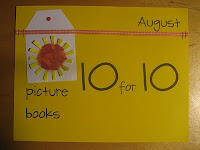
Some grow more slowly, unfolding themselves bit by bit.
-from Mrs. Spitzer’s Garden by Edith Pattou
Last spring I planted some morning glory seeds under the mailbox at the end of my driveway. They quickly sprouted, I thinned them out, and they started to grow…and grow…and grow! In just a few short weeks, the vines had inched their way up the post and wrapped themselves around the mailbox. Every day brought new shoots that wound themselves around other vines and found new places to invade. An abundance of beautiful green leaves, big and bright, greeted me each day. I had to start pruning back the vines as they threatened to obliterate the mailbox completely. But, as the weeks turned into months, I still had no blue morning glories to boast about. Several internet searches yielded the same advice – be patient. Plants started from seed sometimes need time to mature. It may take awhile, but I was assured that eventually my diligence and patience would be rewarded. And, just last week, the first bloom appeared. I cheered and celebrated that one small blossom. A few others have followed, and more are beginning to bud, all at their own pace.
There have been many comparisons made about gardening and teaching, one of my favorites being the extended metaphor found in the picture book Mrs.Spitzer’s Garden by Edith Pattou. My journey with the morning glories reminded me of this book and the students I work with every year. There were times with the plants when I was ready to give up and pull everything out, but then I remembered the most important part of my work with them. I made sure the roots had a good environment and were given the right amount of sun and water. I adjusted some things based on my research. But the most important thing I needed to do was to be patient. It was a great lesson for me this summer, and one I know I will reflect on throughout the year. As teachers, we nurture, provide the best environment, try different strategies, and encourage our students as they grow. But most importantly, we must remember to be patient. Each will blossom at his or her own pace.
Lawrence Stenhouse, the great British educational thinker and activist for teachers, once wrote:
In agriculture the equation of invested input against gross yield is all: it does not matter if individual plants fail to thrive or die so long as the cost of saving them is greater than the cost of losing them…This does not apply to the careful gardener whose labour is not costed, but a labour of love. He wants each of his plants to thrive, and he can treat each one individually. Indeed he can grow a hundred different plants in his garden and differentiate his treatment of each, pruning his roses, but not his sweet peas. Gardening rather than agriculture is the analogy for education.
Have a wonderful year!


 RSS Feed
RSS Feed
